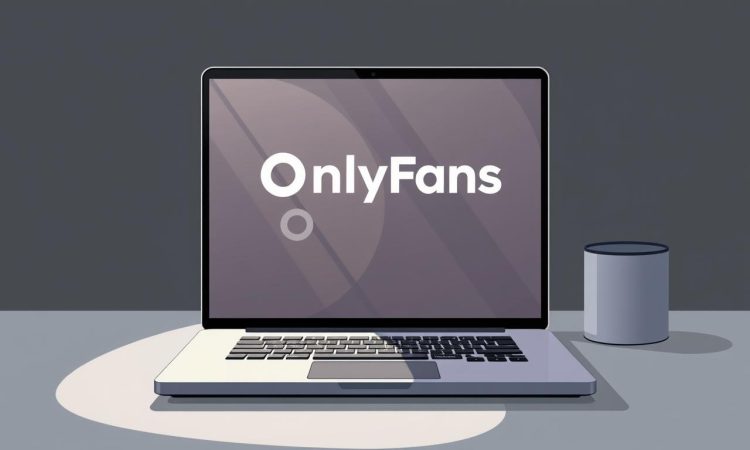
In today’s digital age, platforms like OnlyFans have transformed how creators connect with their fans. With over 170 million registered users, this subscription-based service is more than just a hub for adult content. Fitness trainers, chefs, and lifestyle influencers also use it to share exclusive material.
As relationships evolve in the online world, curiosity about a partner’s subscription habits has become a common concern. This guide aims to explore the topic respectfully, offering insights into financial clues, social media behaviors, and discreet search techniques.
Our focus is on fostering trust and understanding while addressing the boundaries of digital interactions. Let’s dive into a conversation that balances curiosity with respect for privacy.
On this Page:
- 1 Understanding OnlyFans: Platform Overview & Privacy Settings
- 2 Recognizing Behavioral and Financial Clues
- 3 Investigating Through Social Media Platforms
- 4 Practical Methods for Online Searches
- 5 Using Third-Party Tools to Uncover Accounts
- 6 Managing Ethical Considerations and Privacy
- 7 how to know if someone has an onlyfans subscription
- 8 Conclusion
Understanding OnlyFans: Platform Overview & Privacy Settings
OnlyFans has become a versatile platform for creators to share exclusive content. From fitness trainers to lifestyle influencers, it offers a unique way to monetize skills and build a dedicated following. With over 170 million users, it’s more than just a hub for adult content—it’s a space for diverse creators to thrive.
What is OnlyFans and Who Uses It?
OnlyFans started as a platform for creators to monetize their work through subscriptions. Today, it hosts a wide range of content, from fitness tips to personal advice. Adult content creators, chefs, and even celebrities like Amber Rose and Bella Thorne use it to connect with their audience.
The platform’s flexibility allows creators to set their subscription fees, ranging from free to $30 per month. This variety attracts a diverse user base, making it a popular choice for both creators and fans.
Exploring Public Profiles and Privacy Settings
OnlyFans offers different privacy settings to protect user information. Creators can choose between public profiles, subscribers-only content, or free-to-follow options. These settings determine how much information is visible to others.
Public profiles display basic details like bios and cover photos, while private content is accessible only to paying subscribers. Understanding these settings is crucial for respecting digital boundaries and navigating the platform responsibly.
For example, a fitness coach might share free workout tips publicly but reserve personalized plans for subscribers. This approach highlights the importance of privacy settings in managing content and relationships on OnlyFans.
Recognizing Behavioral and Financial Clues
Financial statements and digital habits can reveal hidden online subscriptions. Subtle changes in spending patterns or screen time might indicate something unexpected. Let’s explore how these clues can help identify undisclosed accounts without jumping to conclusions.
Unusual Financial Transactions to Watch For
Bank statements often hold clues to online activities. Recurring charges with unfamiliar descriptors, like “Finix International,” might suggest a fan account subscription. These entries are worth noting, especially if they appear regularly.
Unexplained financial activity can be a signal for further investigation. It’s essential to approach these findings with an open mind, avoiding assumptions about a partner’s intentions.
Digital Behaviors and Increased Online Activity
Changes in online behavior can also be telling. Excessive screen time, especially during off-peak hours, might indicate increased activity on certain platforms. Secretive phone usage or the creation of new social media accounts could also be signs.
These behaviors, when combined with financial clues, create a clearer picture. However, it’s crucial to consider these signs thoughtfully, ensuring respect for privacy and trust in relationships.
Investigating Through Social Media Platforms
Social media platforms often serve as a window into digital identities and online activities. Many creators use these platforms to promote their exclusive content and engage with their followers. By examining profiles and interactions, it’s possible to uncover connections to subscription-based services.
Identifying Social Signals on Instagram, Twitter, and More
Creators frequently share links to their OnlyFans profiles in their bios or posts. These promotional posts can include direct mentions or subtle hints. For example, a Twitter bio might feature a link labeled “Exclusive Content” or “Support Me Here.”
Followers who interact with these posts can also provide clues. Comments, likes, and shares often indicate a connection to the creator’s content. Tracking consistent details like usernames and account names across platforms helps establish a conclusive link.
Instagram stories and highlights are another area to explore. Creators often use these features to share snippets of their work, encouraging followers to subscribe for more. Cross-referencing these details with other social media accounts can reveal a person’s involvement.
While investigating, it’s essential to respect privacy. Avoid intrusive methods and focus on publicly available information. Understanding social signals can provide insights without crossing ethical boundaries.
Practical Methods for Online Searches
Exploring online platforms can reveal connections to subscription-based services like OnlyFans. With the right techniques, you can uncover public profiles and links to exclusive content. Let’s dive into effective search methods that respect privacy while providing valuable insights.
Google Search Techniques and Username Variations
Google is a powerful tool for finding online profiles. Start by entering a username into the search bar. Many creators use the same username across multiple platforms, making it easier to locate their accounts.
Experiment with different spellings and abbreviations. For example, try adding or removing numbers, underscores, or hyphens. This approach can help uncover hidden accounts that might not appear in initial searches.
Direct URL manipulations, like typing “OnlyFans.com/[username]” into the browser, can also yield results. If the profile exists, it will load directly, confirming the account’s presence.
Utilizing Search Operators for Better Results
Advanced search operators refine your queries and filter out irrelevant results. Use quotes to search for exact phrases, like “username OnlyFans.” This narrows down the results to specific matches.
Combine operators with partial email addresses or known profile details. For instance, searching “site:OnlyFans.com [email fragment]” can increase accuracy. This method is particularly useful when you have limited information.
Online search techniques, when carefully applied, can reveal public profiles and links to exclusive content. By connecting social media profiles back to an OnlyFans account, you can gain a clearer picture of someone’s online presence.
Using Third-Party Tools to Uncover Accounts
Third-party tools have emerged as a powerful way to uncover hidden online accounts. These platforms specialize in scanning public records and data to identify connections to subscription-based services. For users seeking clarity, these tools offer an alternative to traditional search methods.
Overview of Specialized Search Tools
Platforms like Spokeo, Fansmetrics, and TheOnlyFinder are designed to piece together an individual’s online presence. Spokeo, for example, scans over 120 social networks and accesses billions of consumer records. This makes it a comprehensive option for users looking to verify details.
Fansmetrics and TheOnlyFinder focus specifically on identifying accounts on subscription-based platforms. These tools allow users to search by username, email, or other identifiers. They are particularly useful when traditional searches yield no results.
Benefits and Limitations of Background Checkers
Third-party tools offer several benefits. They provide access to vast databases, making it easier to locate hidden accounts. For instance, a woman seeking to verify a partner’s online activity might find these tools helpful. They also save time by consolidating information from multiple sources.
However, these tools have limitations. Many require subscriptions, which can be costly. Inaccuracies in data are also a concern, as not all records are up-to-date. Additionally, ethical considerations must be taken into account. Using these tools without consent can violate privacy boundaries.
For users exploring these options, it’s essential to weigh the benefits against the potential risks. Respecting digital boundaries and ensuring ethical use should always be a priority.
Managing Ethical Considerations and Privacy
Navigating the digital landscape requires a balance of curiosity and respect for privacy. As we explore online platforms, it’s essential to consider the ethical responsibilities involved. This section highlights the importance of consent, digital boundaries, and legal implications.
Understanding Consent and Digital Boundaries
Respecting someone’s digital footprint starts with obtaining consent. Without permission, accessing financial records or social media data can breach privacy. This step ensures that investigative efforts remain respectful and responsible.
Digital boundaries are equally important. Open communication fosters trust, while covert actions can harm relationships. A discussion about online activities can clarify intentions and prevent misunderstandings.
Legal Implications and Best Practices
Unauthorized searches can lead to legal consequences. Accessing private information without consent may violate privacy laws, resulting in civil lawsuits or criminal charges. It’s crucial to stay within legal limits.
Best practices include using publicly available information and avoiding intrusive methods. For example, relying on a website’s public profiles is safer than attempting to bypass privacy settings. Ethical behavior should always come first.
By prioritizing respect and transparency, we can navigate digital spaces responsibly. This approach not only protects privacy but also strengthens trust in relationships.
how to know if someone has an onlyfans subscription
Curiosity about online activities often leads to questions about digital footprints. When it comes to subscription-based platforms, subtle clues can help uncover the truth. We’ll guide you through a step-by-step process for discreet investigation, ensuring respect for privacy and trust.
Step-by-Step Process for Discreet Investigation
Start by analyzing financial statements. Look for recurring charges with unfamiliar descriptors. These could indicate access to subscription services. Pay attention to small transactions, as they often go unnoticed but can tell a story.
Next, examine social media activity. Creators often promote their profiles on platforms like Instagram or Twitter. Check bios, posts, and stories for links or hints. Usernames and account names can provide valuable clues.
Use search engines to explore potential connections. Enter usernames or email fragments into the search bar. Experiment with variations to uncover hidden accounts. Advanced search operators can refine results and increase accuracy.
Third-party tools like Social Catfish or OnlyFinder can also assist. These platforms scan public records and data to identify accounts. While helpful, remember to use them ethically and within legal boundaries.
Finally, if doubts persist, consider an open conversation. Addressing questions directly can clarify intentions and strengthen trust. Tact and subtlety are key throughout the process to avoid unnecessary breaches of privacy.
Conclusion
Understanding digital footprints requires a blend of curiosity and respect. Throughout this guide, we’ve explored methods to uncover potential connections to subscription-based platforms. Financial records, social media clues, and online behaviors can provide insights, but they are not definitive proof.
We encourage using these techniques delicately, always considering relationship dynamics and legal boundaries. Open communication often brings clarity more effectively than covert analysis. Reflecting on findings and their impact on personal relationships is essential.
Every action online has consequences. Respecting privacy and maintaining mutual trust should remain at the forefront. By balancing investigation with sensitivity, we can navigate digital spaces responsibly and ethically.










